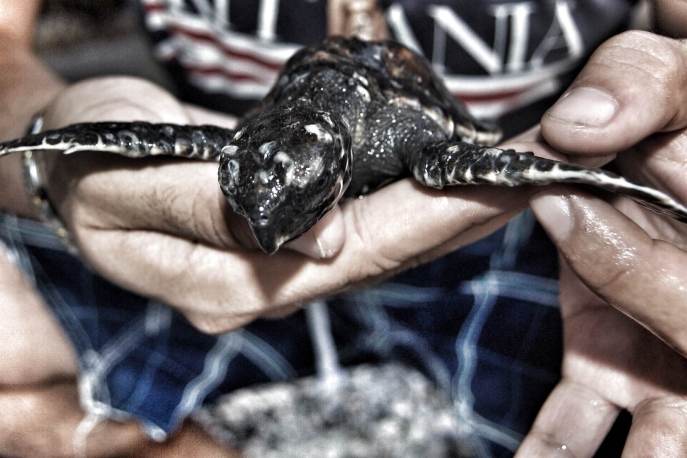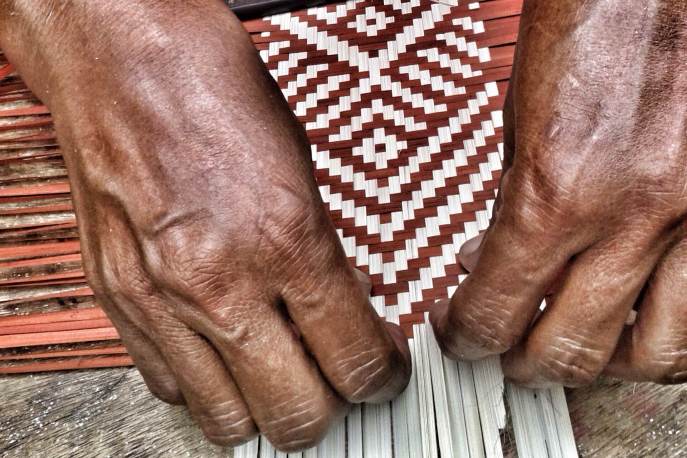
A Tingguian bamboo split weaver in the province of Abra in the Cordillera Administrative Region. The Tingguian people, also known as Isneg, are a lowland indigenous people group that traces their ancestry to the much older Itneg group of the highlands.
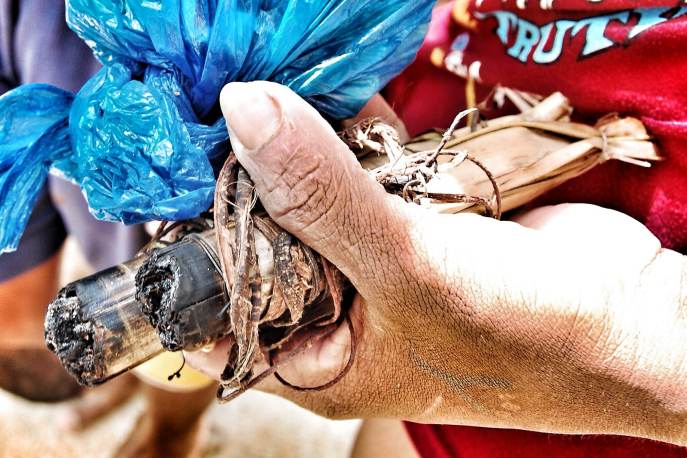
Hand of a Tagbanua bird’s nest (an expensive ingredient for an exotic soup) hunter holding a locally-prepared torch used to lighten up the deepest parts of the caves in Coron Island of Palawan. Gathering bird’s nest is known to be one of the most dangerous jobs in the world. The Tagbanua people are sea-dwellers and are some of the first to occupy the archipelago.
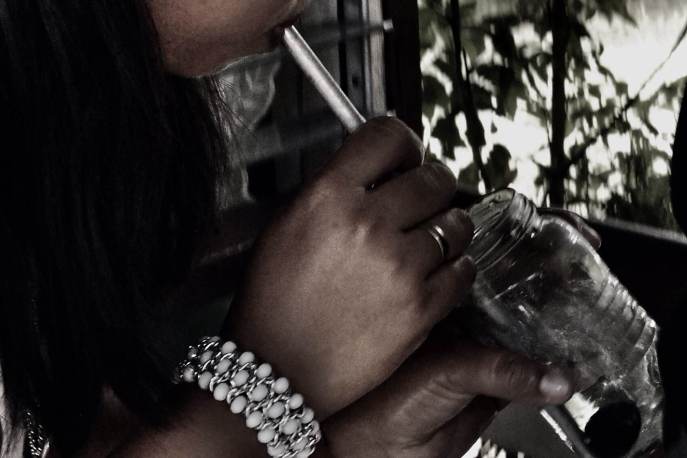
A traditional healer performing “bulo-bulo” (a form of cleansing done by blowing a water-filled glass containing an amulet) to a curious patient in Siquijor. Sometimes, just right after the ritual, foreign objects — such as sand, pebbles, and even worms — emerge inside the glass! This small island is notorious for its history of sorcery, witchcraft and the dark arts.
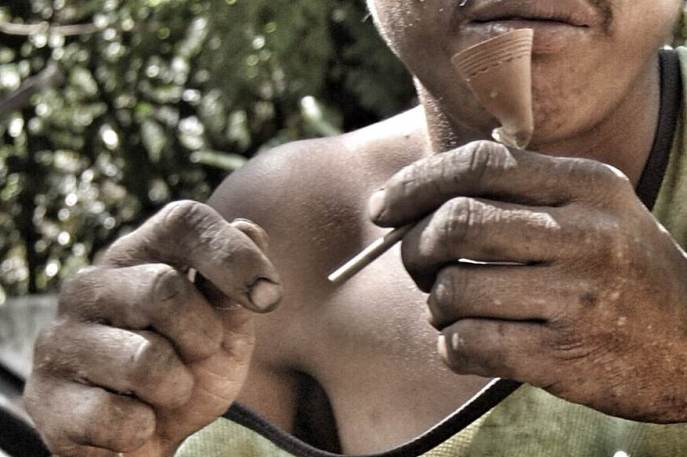
A Taubuid Mangyan showing a pipe he made using a bamboo twig and clay with some tribal etchings. These people inhabit the central parts of Mts. Iglit-Baco National Park, and are some of the oldest known groups in the Philippines. They have an ancient writing system identified as a paleograph and is registered in the Memory of the World list.
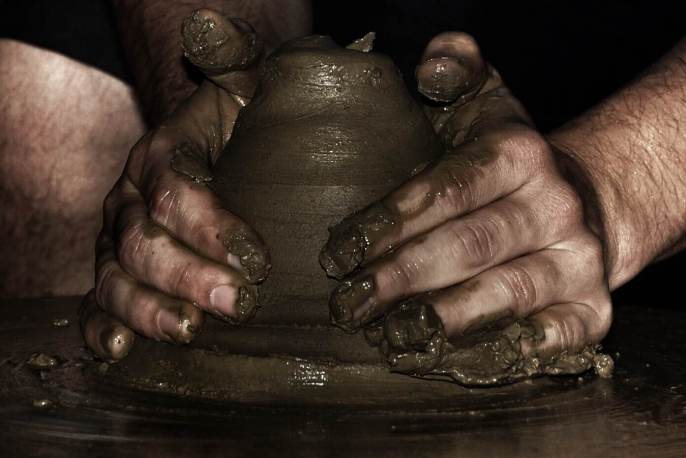
A local potter in the “Pagburnayan” village in the historic town of Vigan, a World Heritage Site. Pottery was introduced by Chinese merchant-craftsmen who have been trading with earlier Filipinos since time immemorial. The Pagburnayan village is home to one of the longest extant dragon kilns outside mainland China.
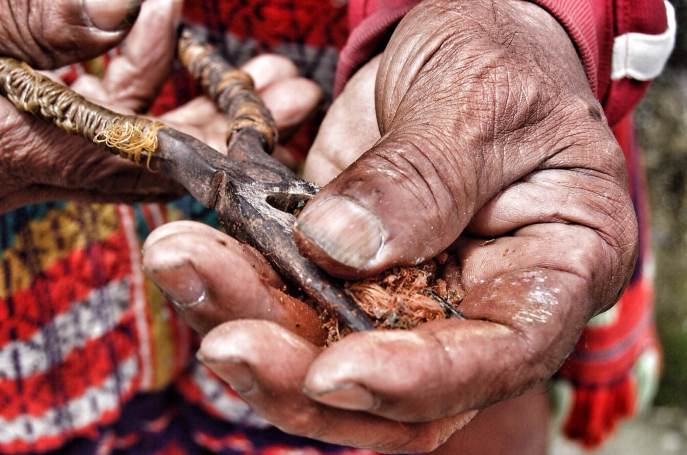
An Ifugao preparing a “moma”, a bettelnut chew in Banaue. The Ifugao are the same people who constructed the world-famous rice terraces of the Philippine Cordilleras (a World Heritage Site), and are, likewise, the guardians of the “Hudhud” chants (a Masterpiece of Oral and Intangible Heritage of Humanity).
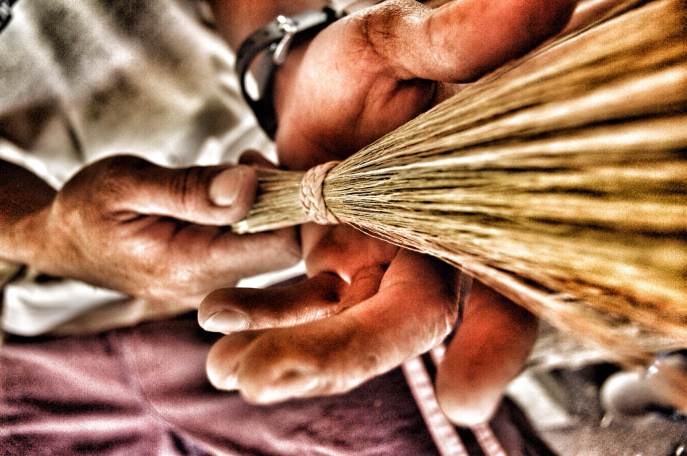
An Iraya, a lowland Mangyan sub-group, making a broom out of tiger grasses in Tamisan, a village on the foot of Mts. Iglit-Baco National Park, an ASEAN Heritage Park. Even with extensive and heavy use, these local brooms are known to last for years.
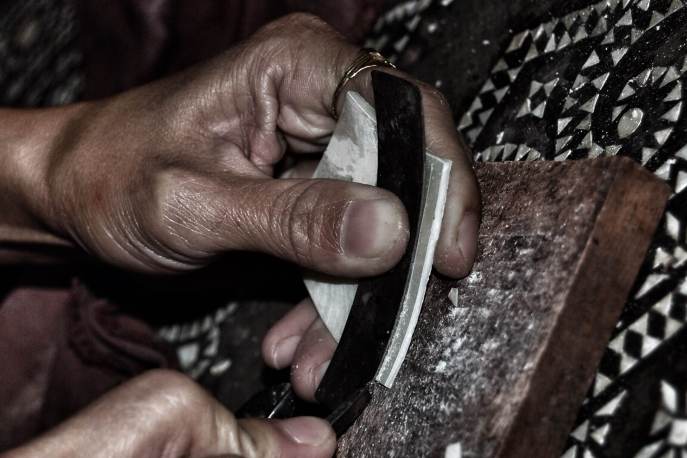
Hands of a Maranao woman inlaying mother of pearls to a wooden chest. The Maranao people of Tugaya beside Lake Lanao are some of the most artistic groups in the Philippines. Nearly all households in town are engaged in various traditional ‘okir’-based crafts such as wood carving, weaving, brass-ware making, among others.
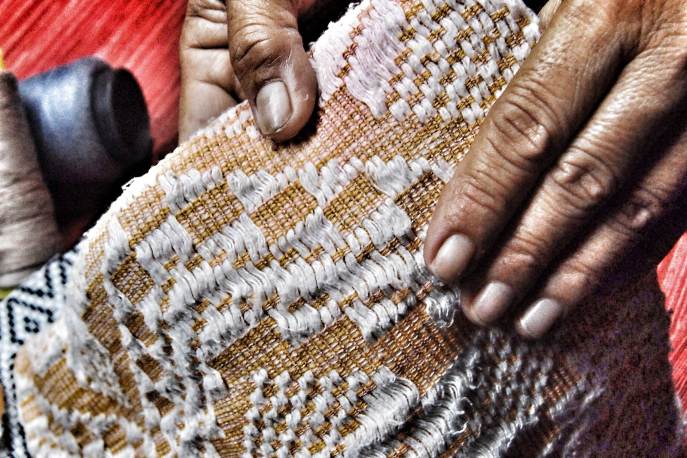
An Ilocano showing an heirloom “abel” textile from Paoay in Ilocos Norte. The half century-old textile featured in this photo follows the “sinukitan” technique. Abel are loom-woven textiles that are known for their versatility, sturdiness and creative patterns, as well as the critical role they played during the galleon trade years with Mexico and Spain.
